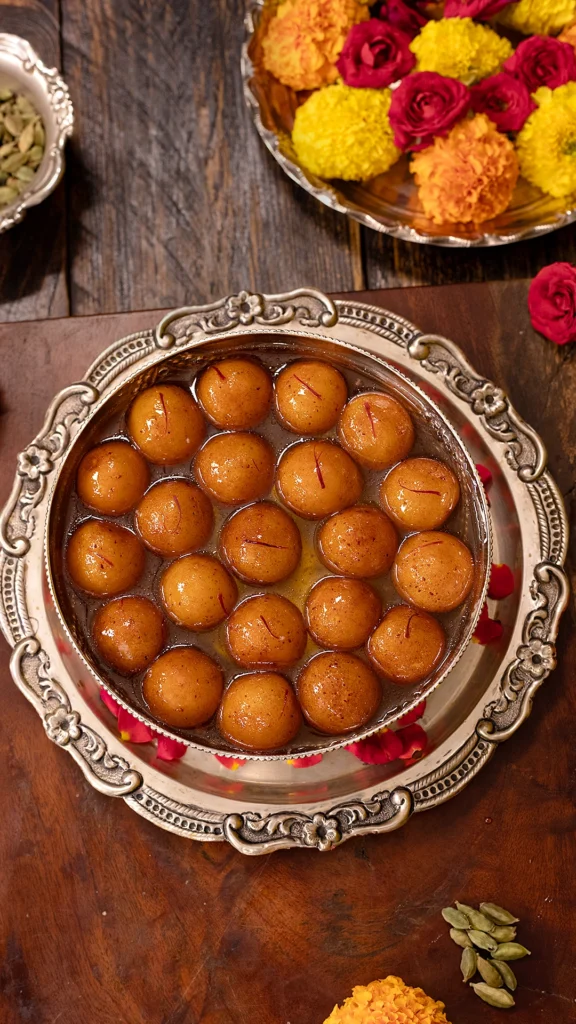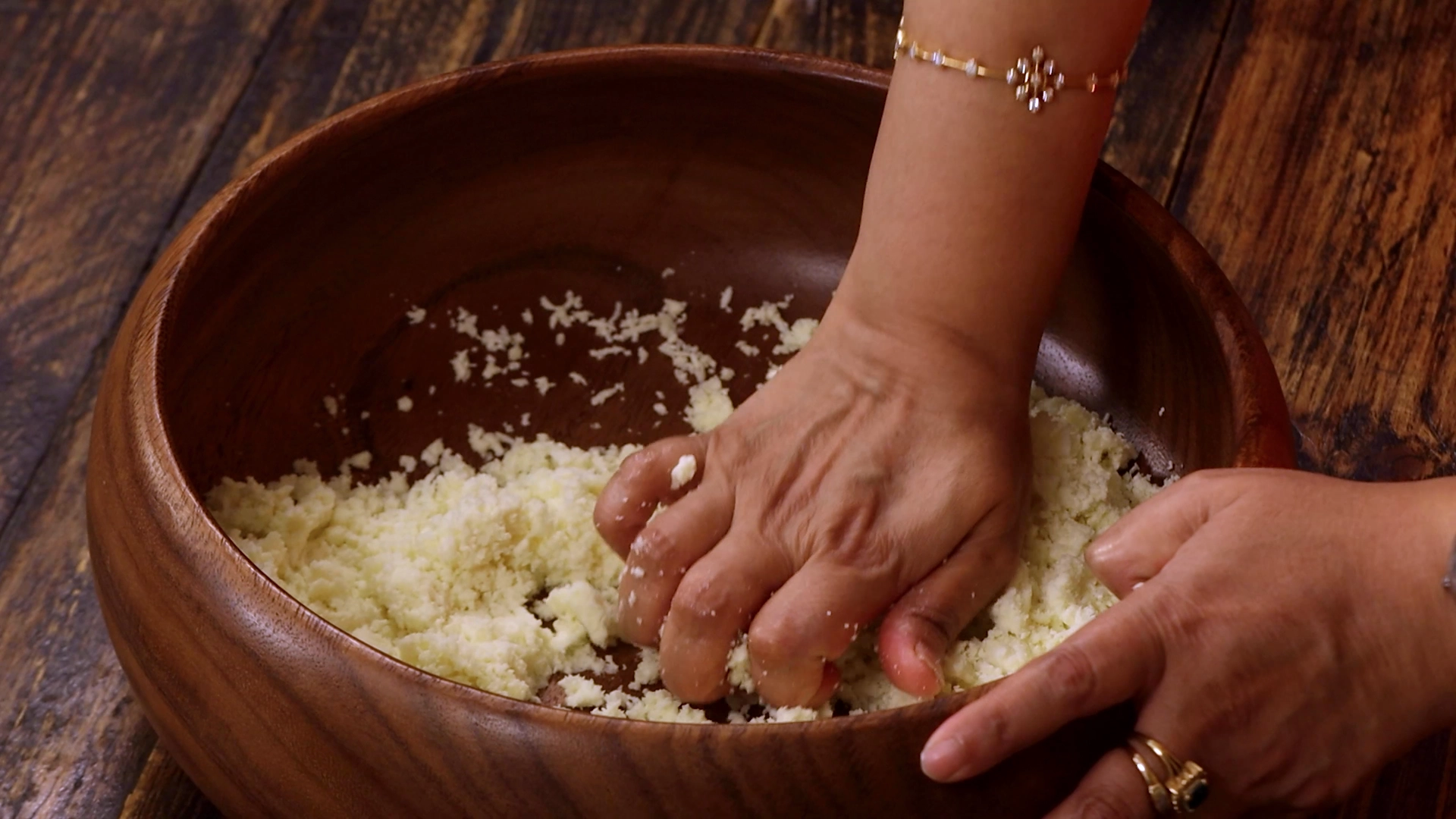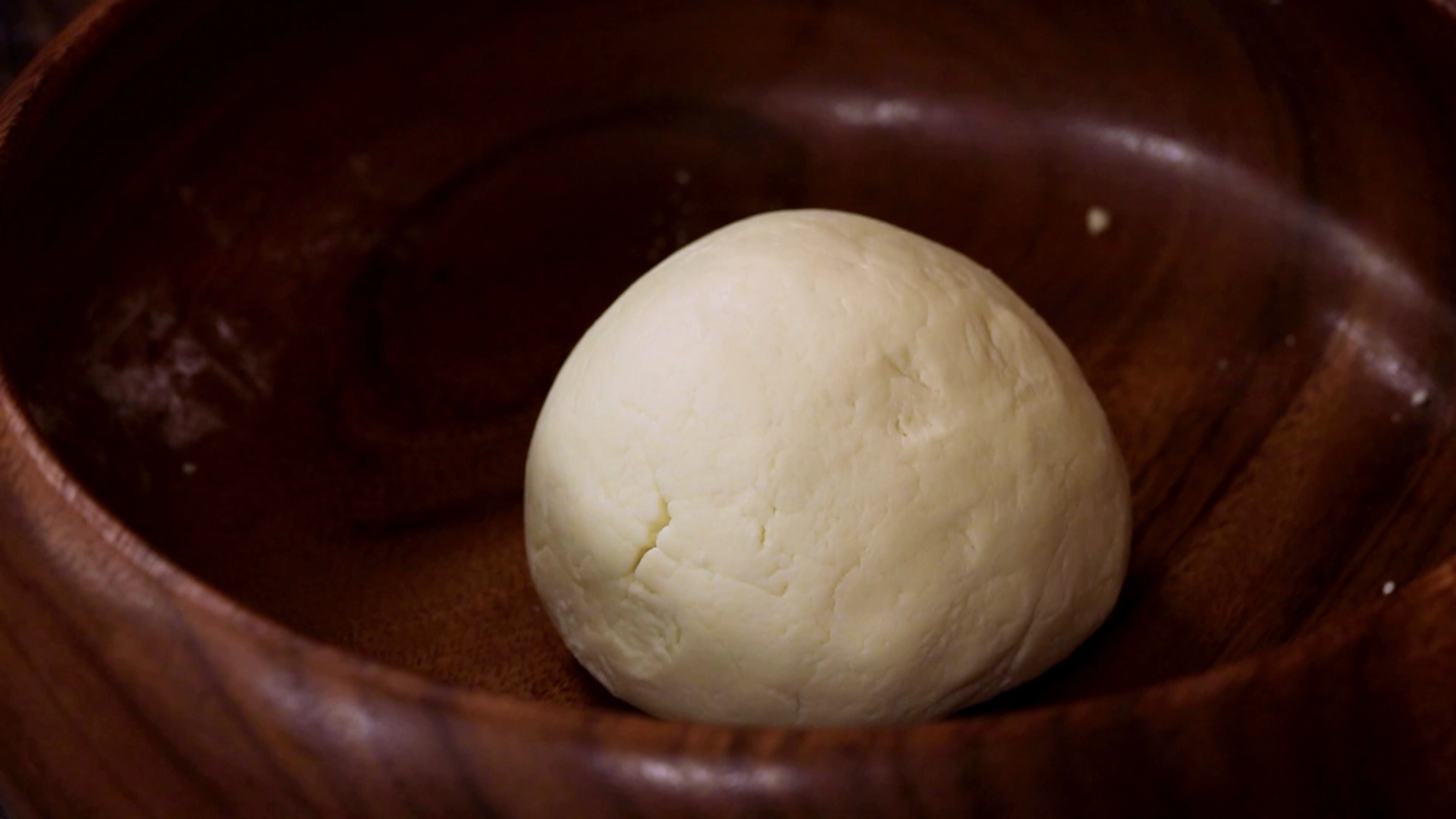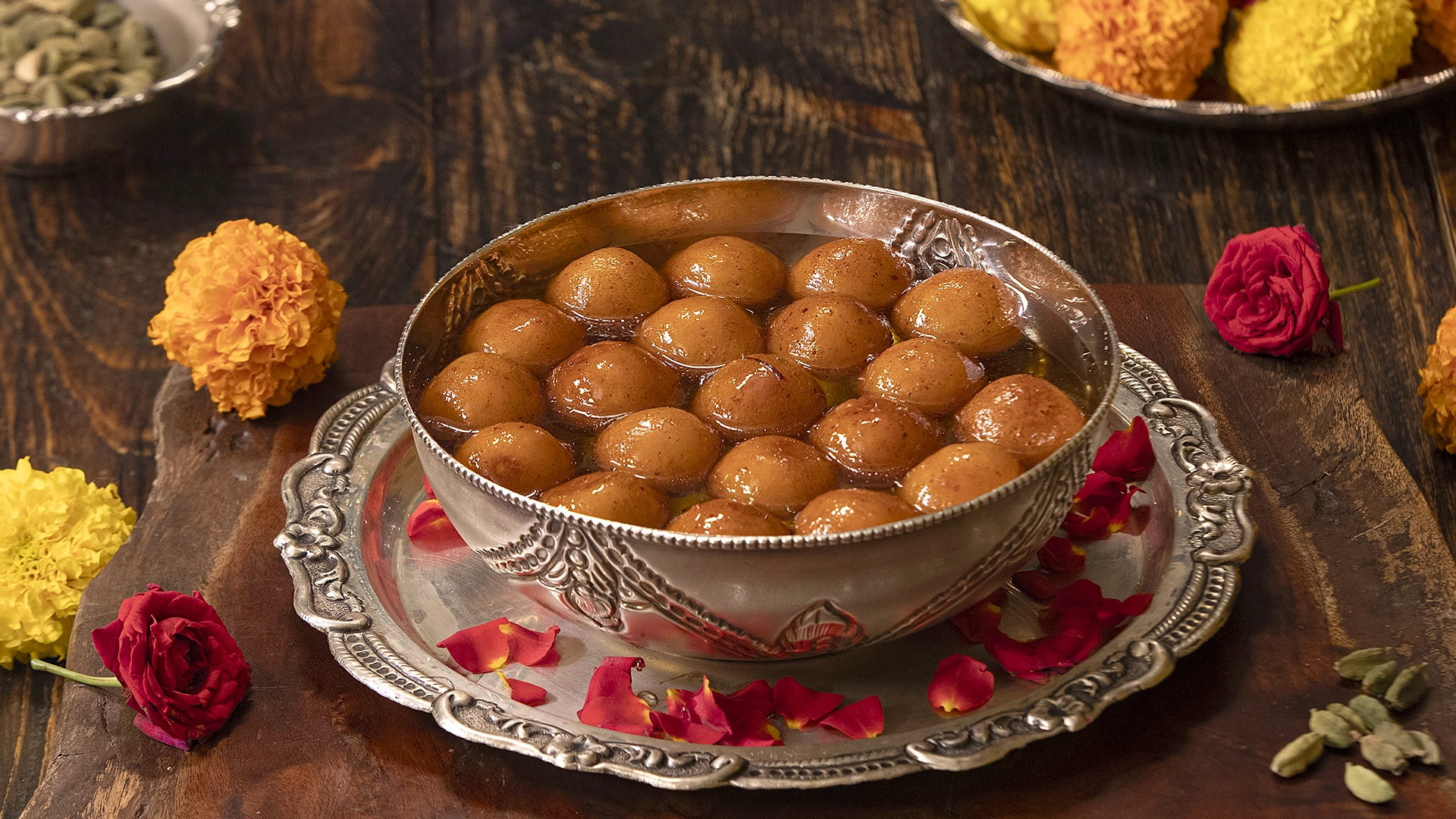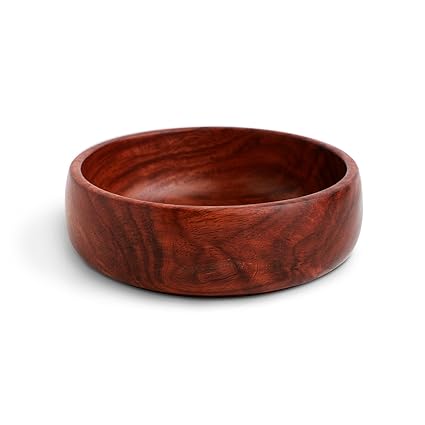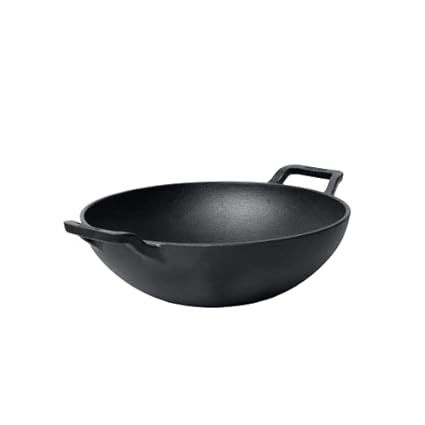Ever wonder how those melt-in-your-mouth gulab jamuns from the sweet shop stay so soft and syrupy?
You can make the same at home — reliably — without mystery. With a little attention to dough consistency, frying temperature, and syrup timing, you’ll get soft, spongy, juicy gulab jamuns that soak up syrup like pros.
Why this dessert works
Gulab Jamun is a classic from the Indian subcontinent — deep-fried milk solids or dough balls soaked in fragrant sugar syrup. Its name says it all: gulab (rose) for the syrup aroma, and jamun for the shape (like the jamun fruit). It’s a festival staple because it’s decadent, transportable, and loved by every generation.
Why you’ll love it: the contrast of a slightly caramelized exterior, pillowy interior, and perfumed syrup makes every bite satisfying. It’s also forgiving: with a few practical tips you can avoid common problems (sinking, hard centers, soggy exteriors).
Ingredients breakdown
- Khoa / Mawa (200 g): the rich base — lends fat, milk solids, and that melt-in-mouth texture.
- Paneer (200 g): keeps the dough soft and helps the gulab jamun stay spongy; it lightens the khoa.
- Maida / All-purpose flour (½ cup): binds the dough and gives strength so the jamun holds shape when fried.
- Sugar (for syrup): sweetener and the medium that the jamun soaks up — make the syrup properly and the jamun becomes juicy.
- Cardamom & saffron: aroma agents — subtle but essential for authentic flavor.
- Oil/ghee for frying: the frying medium determines color and crust; neutral oil or ghee both work (ghee = richer flavor).
Vegan Swap 🌿: For a vegan version, use soaked & blended cashew paste (thick) + almond milk reduced to a creamy consistency in place of khoa, and shallow-fry in neutral oil. The texture changes, but you’ll get a lovely syrupy treat.
The process
Start by working the khoa and grated paneer into a smooth, cohesive mass — you want no lumps. Add the flour gradually, just enough to bind; the dough should be soft and slightly tacky, not dry. Let it rest for a short while so the ingredients harmonize.
While the dough rests, prepare a warm sugar syrup scented with cardamom and a few saffron strands.
Keep the syrup warm but not boiling hard when you plan to soak the fried jamuns — syrup temperature matters for absorption.
Shape the dough into perfectly smooth balls — no cracks — and keep them uniform so frying is even. Heat oil on medium-low: slow and steady heat helps the jamuns cook through without burning the outside. Fry in small batches, turning gently, until a golden brown color develops.
Remove and immediately transfer them into warm syrup — don’t let them cool first. That warm → warm transfer is the trick that helps them soak up syrup and become juicy.
Let them rest in syrup for several hours (4–6 is ideal). The longer they sit, the juicier they become. Serve warm or chilled — both work.
Pro Tip 💡:If a ball cracks while frying it will soak excess oil and stay dense. Smooth each ball carefully with damp palms before frying, and don’t overwork the dough. Keep oil at a steady medium-low — too hot and the exterior browns before the center cooks.
What goes well with Gulab Jamun
- A scoop of vanilla ice cream (hot syrup + cold ice cream = magic).
- Rabri or chilled sweetened milk for a richer plate.
- Dry fruits or crushed pistachios for garnish and crunch.
How to serve
- Warm: serve jamuns warm in a shallow bowl of syrup, topped with slivered pistachios or saffron threads.
- Cold: chill the syrup-soaked jamuns for a few hours and serve as a cool dessert — excellent in summers.
- For a festive platter, arrange 2–3 jamuns per person with a drizzle of rabri and a few chopped nuts.
Packing & storage
- Make-ahead: You can prepare jamuns and syrup a day ahead. Keep the jamuns submerged in syrup in an airtight container in the fridge.
- Transport: Pack syrup and jamuns together in a leak-proof container. Reheat gently (or serve chilled).
- Shelf life: Stored in the fridge in syrup, they keep well for 4–5 days; the texture will deepen with time.
Party & bulk preparation
- Scale the dough proportionally and roll balls ahead of time; chill them lightly. Fry just before serving for the best puff and texture.
- Frying tip: set up an assembly line — one person shapes balls, another fries, another transfers to syrup. This keeps oil temperature stable and output consistent.
- For large batches, keep the syrup warm in an insulated pot and add fried jamuns in batches so each piece absorbs the syrup evenly.
Related Recipes for Gulab Jamun
- Rasgulla Recipe — soft, spongy Bengali sweet soaked in light sugar syrup.
- Palkova — rich, slow-cooked milk sweet with a caramelized texture.
- Doodh Peda with Chocolate — traditional milk peda with a chocolaty twist.
- Rava Coconut Ladoo — festive semolina ladoos with a nutty coconut flavor.
- Moong Dal Halwa — rich, aromatic halwa made from moong dal and ghee — a perfect festive treat.
- Tender Coconut Payasam — creamy South Indian dessert made with coconut milk and jaggery.
Gulab Jamun
Description
There’s something magical about a plate of homemade gulab jamun — soft, golden balls soaked in fragrant cardamom-saffron syrup that melt the moment you take a bite. This easy version uses fresh khoa (mawa) and paneer to create that perfect texture: tender, juicy, and never dry. The dough comes together quickly, and a slow fry followed by a long soak does all the work. Whether you’re celebrating Diwali or just craving a little sweetness after dinner, these gulab jamuns bring pure comfort and joy. Serve them warm for cozy vibes or chilled for a cool festive treat — either way, they’ll disappear fast!
Ingredients
Instructions
Prep Work
-
Prepare dairy
Grate the paneer and crumble the khoa so both are soft and lump-free before kneading
-
Sift flour
Sift the maida to remove lumps and make the dough smoother -
Soak saffron
Soak a few saffron strands in a little warm liquid so they release color and aroma -
Measure syrup items
Measure sugar and water and keep them handy for the syrup step -
Set frying station
Set a wide pan, oil, and a slotted spoon nearby before shaping the balls
Method
-
Knead dough
Knead the dough with fresh khoa/mawa and grated paneer until soft and lump-free
-
Bind dough
Add maida gradually to bind the dough well; do not add water or milk -
Rest dough
Let the dough rest for about 20 minutes -
Make syrup
Dissolve sugar in water, add cardamom powder and saffron, simmer on low heat for 5 minutes and keep aside -
Shape balls
Divide the dough into small balls evenly, ensuring they are smooth and without cracks -
Fry gently
Heat oil on medium-low and gently fry the balls in batches, tossing them slowly for even golden brown color -
Soak in syrup
Once fried, immediately soak the gulab jamuns in the warm sugar syrup and let them absorb the syrup for at least 4 hours, preferably longer -
Serve
Serve warm or chilled as desired
Nutrition Facts
Servings 6
- Amount Per Serving
- Calories 431kcal
- % Daily Value *
- Total Fat 13.5g21%
- Saturated Fat 5.3g27%
- Cholesterol 40mg14%
- Sodium 120mg5%
- Potassium 120mg4%
- Total Carbohydrate 74g25%
- Dietary Fiber 0.1g1%
- Sugars 68g
- Protein 4.7g10%
- Calcium 68 mg
- Iron 0.1 mg
* Percent Daily Values are based on a 2,000 calorie diet. Your daily value may be higher or lower depending on your calorie needs.

